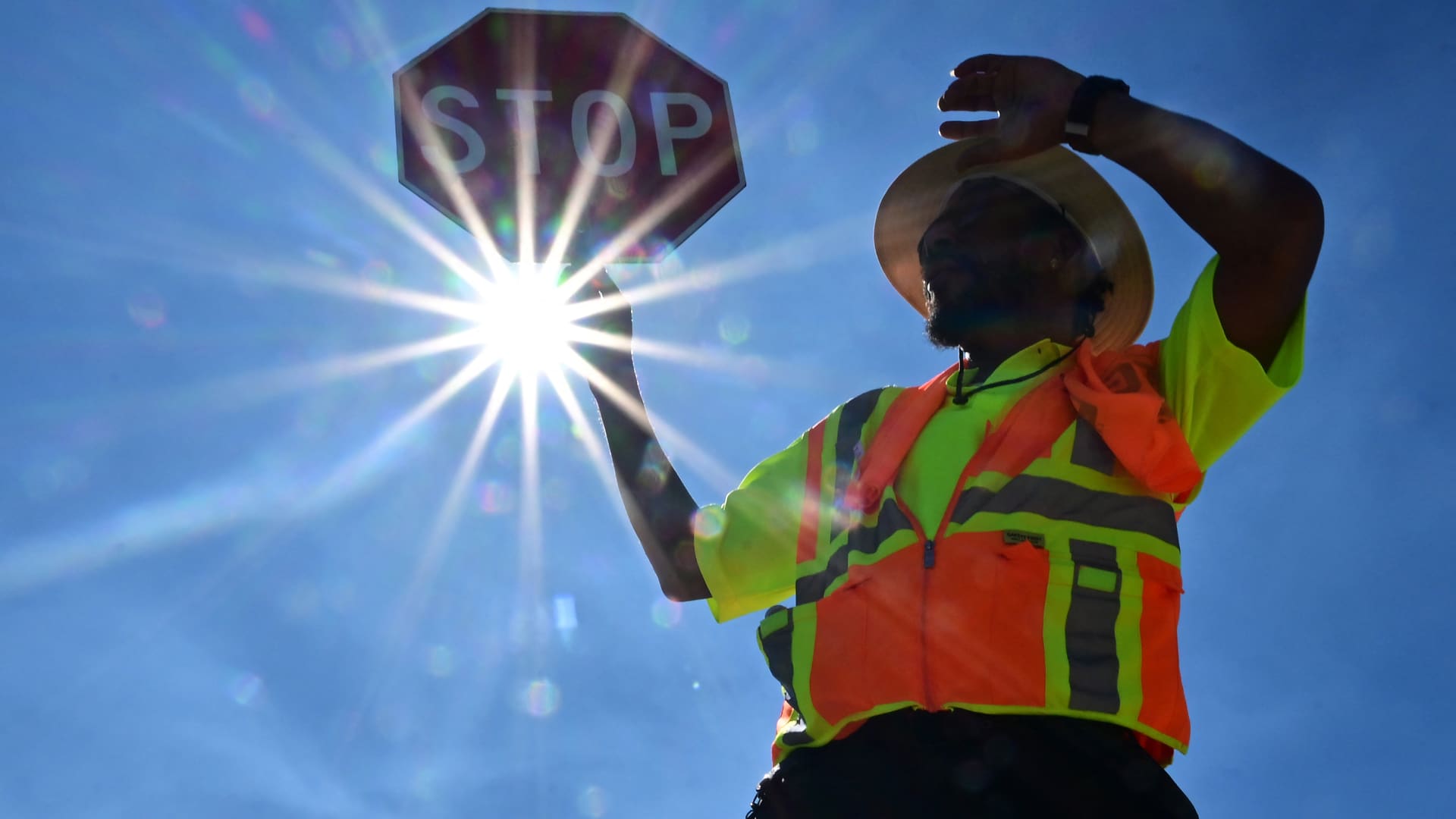Traffic warden Rai Rogers diligently monitors his street corner in scorching Las Vegas, Nevada on July 12, 2023. As temperatures soared to a sweltering 106 degrees amidst an ongoing heatwave, more than 50 million Americans found themselves bracing for dangerously high temperatures across the southern United States, from California to Texas to Florida. This surge in extreme weather events has become increasingly concerning, and scientists back up these observations.
Michael Mann, a respected professor of earth and environmental science at the University of Pennsylvania, concurs with this sentiment, stating, “The number of simultaneous weather extremes we’re experiencing in the Northern Hemisphere right now appears unprecedented in my recollection.” Furthermore, the National Oceanic and Atmospheric Administration (NOAA) confirms that June 2023 was the hottest June on record, marking the 47th consecutive June and the 532nd consecutive month with temperatures above the 20th-century average.
The extent of sea ice in June also reached a historic low, largely due to record-breaking levels in the Antarctic. NOAA reports that there were nine tropical cyclones in June, with the global accumulated cyclone energy nearly doubling its average value for 1991–2020. This worrying trend continues, as a National Weather Service bulletin reveals that 93 million people in the United States are currently under excessive heat warnings and advisories, particularly impacting the West Coast, Great Basin, and Southwest regions.
In addition to scorching heatwaves, extreme weather has manifested in other forms as well. Vermont declared a State of Emergency in response to heavy rainfall and subsequent flooding, while in Canada, record-breaking temperatures fueled devastating wildfires that have also affected air quality in parts of the United States.
The data speaks for itself. NOAA reports that in 2022, the United States experienced 18 separate billion-dollar weather and climate disasters, ranging from tornado outbreaks to heatwaves and wildfires. Disturbingly, 2023 has already seen 12 such disasters. Scientists concur that global warming is exacerbating the intensity and frequency of extreme weather events.
“Our own research indicates that the rise in persistent summer weather extremes like heatwaves and floods can be attributed to human-caused warming,” explains Michael Mann. Paul Ullrich, a climate modeling professor at the University of California, further affirms this connection, stating, “Increases in the frequency and intensity of heatwaves, floods, and wildfires can be directly attributed to climate change.”
Factors like El Niño, a weather pattern characterized by warmer water being pushed eastward, exacerbate the effects of climate change. An El Niño event combined with anthropogenic climate change intensifies extreme weather events, as Professor Ullrich asserts.
The question arises: Can we mitigate the impacts of climate change and reduce the likelihood of extreme weather events? The answer lies in decreasing greenhouse gas emissions and transitioning away from fossil fuels. Every individual can play a part in this by practicing energy conservation techniques such as turning off lights when not in use, adjusting heating and cooling settings, minimizing food waste, and utilizing public transportation. Additionally, voting for leaders committed to environmental action is crucial.
Timothy Canty, an atmospheric and oceanic science professor at the University of Maryland, emphasizes, “Each individual’s contributions to reducing their climate footprint make a difference. It’s easy to point fingers, but we have to acknowledge that societal change starts with individuals.” Furthermore, Canty cites successful international environmental initiatives like the Montreal Protocol as evidence that collaboration between governments, scientists, and businesses can yield positive results.
In conclusion, the rise in extreme weather events has disrupted normal patterns and alarmed scientists. However, by taking collective action to reduce greenhouse gas emissions and promote sustainability, we have the power to mitigate the impacts of climate change and foster a safer and more resilient future for our planet and its inhabitants.
Denial of responsibility! VigourTimes is an automatic aggregator of Global media. In each content, the hyperlink to the primary source is specified. All trademarks belong to their rightful owners, and all materials to their authors. For any complaint, please reach us at – [email protected]. We will take necessary action within 24 hours.


